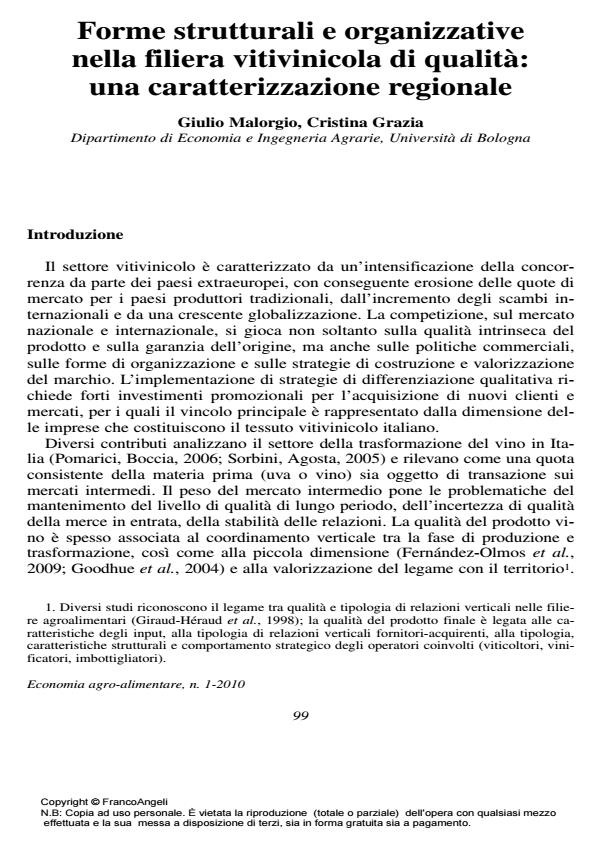Forme strutturali e organizzative nella filiera vitivinicola di qualità: una caratterizzazione regionale
Titolo Rivista ECONOMIA AGRO-ALIMENTARE
Autori/Curatori Giulio Malorgio, Cristina Grazia
Anno di pubblicazione 2010 Fascicolo 2010/1
Lingua Italiano Numero pagine 19 P. 99-117 Dimensione file 599 KB
DOI 10.3280/ECAG2010-001006
Il DOI è il codice a barre della proprietà intellettuale: per saperne di più
clicca qui
Qui sotto puoi vedere in anteprima la prima pagina di questo articolo.
Se questo articolo ti interessa, lo puoi acquistare (e scaricare in formato pdf) seguendo le facili indicazioni per acquistare il download credit. Acquista Download Credits per scaricare questo Articolo in formato PDF

FrancoAngeli è membro della Publishers International Linking Association, Inc (PILA)associazione indipendente e non profit per facilitare (attraverso i servizi tecnologici implementati da CrossRef.org) l’accesso degli studiosi ai contenuti digitali nelle pubblicazioni professionali e scientifiche
The quality of the processed product and the strategies on the final market strongly depends on the types of vertical relationship among the supply chain participants, on the types of economic agents (vine growers, wineries, bottlers), on their structural and organizational characteristics. We provide an original study of the wine processing sector by taking into account the role of the supply chain organization in determining the quality of the processed product. Indeed, the objective of this paper is to study the relationship between structural and organizational characteristics of the Italian wine processing sector and the incidence of quality wine production. Furthermore, we provide a regional description of wine processing units in terms of quality, plants’ size, type of vertical relationship and final product’s valorisation on the final market (through bottling specialization and localisation indexes). This analysis is based on the treatment and elaborations of data concerning harvest and production declarations (source: agea) and wine bottling stage (source: Infocamere - Unioncamere). Wineries are classified according to the degree of vertical integration between the vine-growing and the wine processing stage in agricultural wineries, industrial wineries and cooperatives. At national level, we show that agricultural wineries are mainly characterized by low quantity but high quality wine production, while industrial wineries are mediumbig size firms mainly oriented to table wine production. The regional analysis makes it possible to identify and describe some "structural and organizational typologies" that may characterize specific regional areas. We first point out a positive relationship between the incidence of quality wine production and the quantity of wine processed by (1) small-medium plants’ size wineries and (2) vertically integrated wineries. Moreover, we show that a strong regional orientation to quality wine production may coexist with a high level of specialization in bottling activities that facilitate the strategies for the development of brands on the final market (both of locally produced wine and of wine produced outside the region).
Parole chiave:Quality, vertical relationship, wine processing sector, regional analysis
Jel codes:L66, Q12
Giulio Malorgio, Cristina Grazia, Forme strutturali e organizzative nella filiera vitivinicola di qualità: una caratterizzazione regionale in "ECONOMIA AGRO-ALIMENTARE" 1/2010, pp 99-117, DOI: 10.3280/ECAG2010-001006